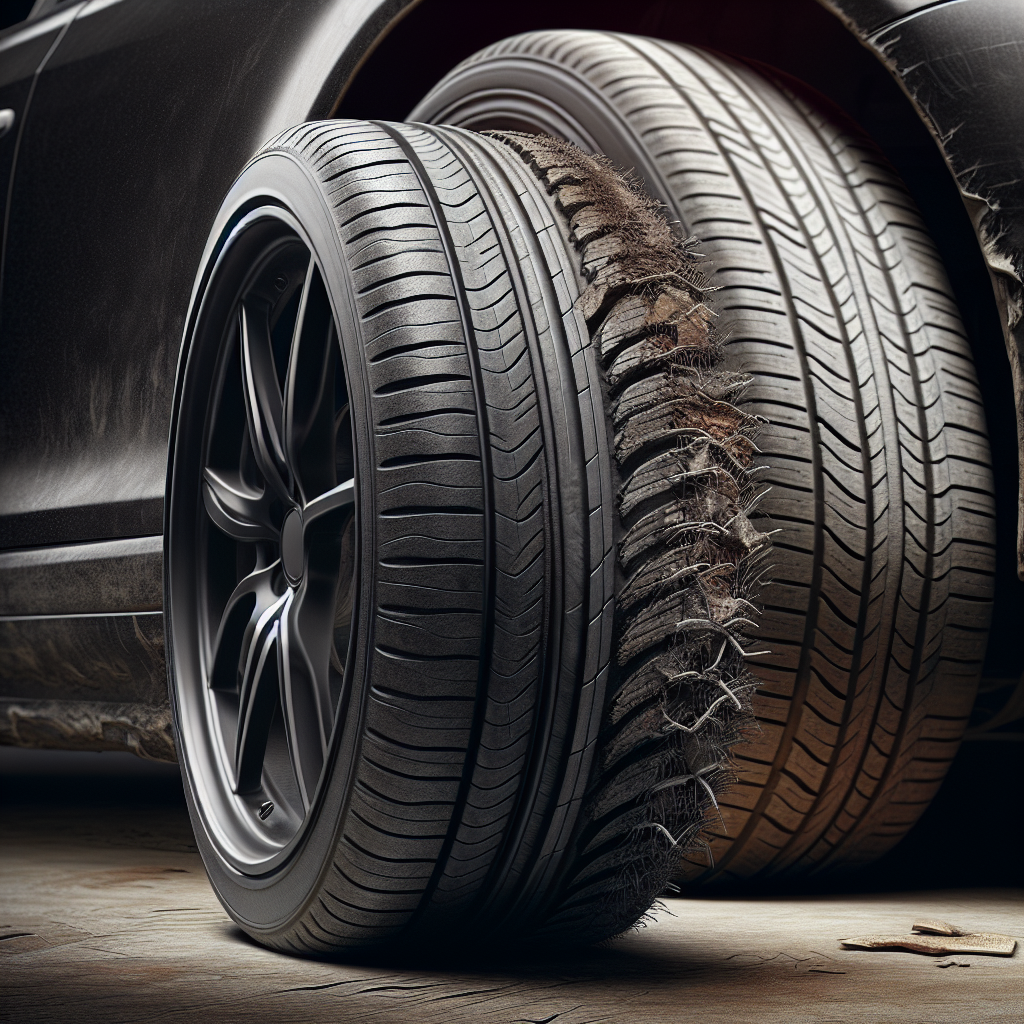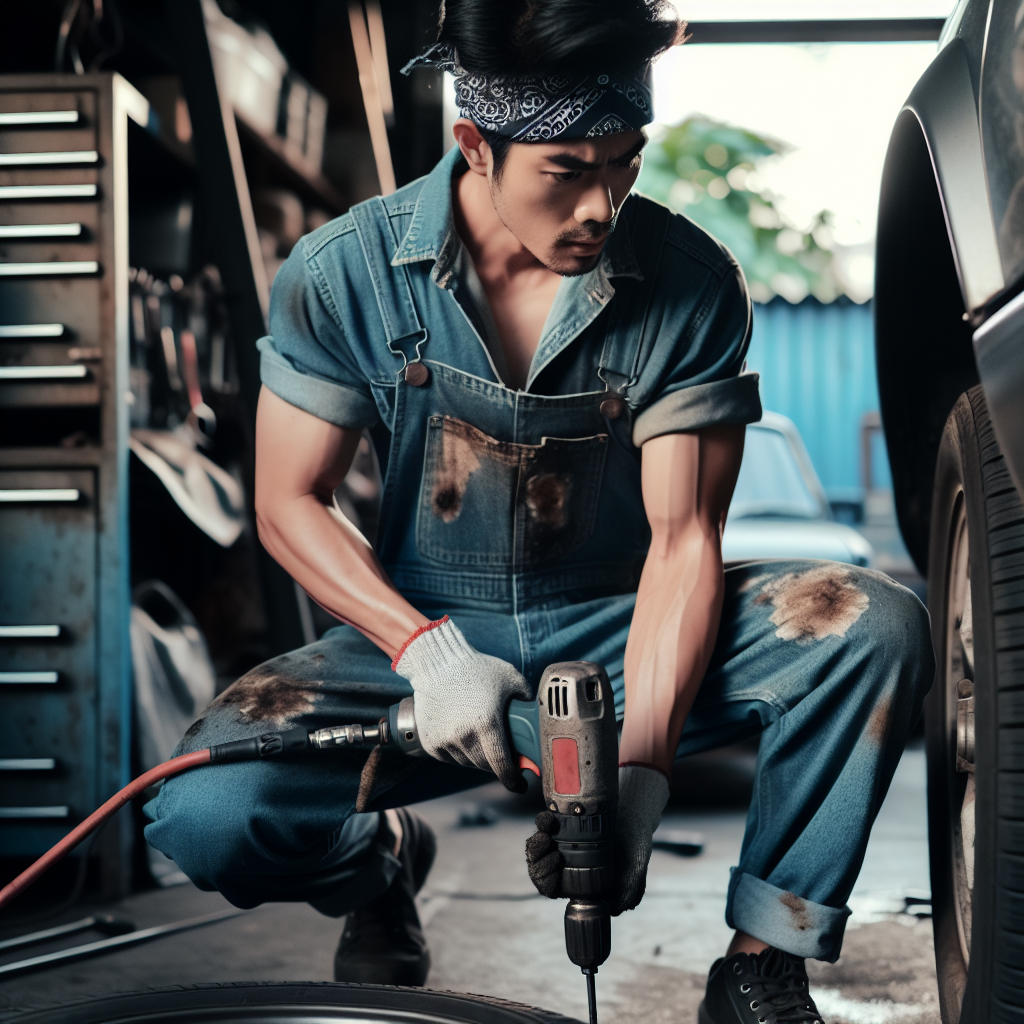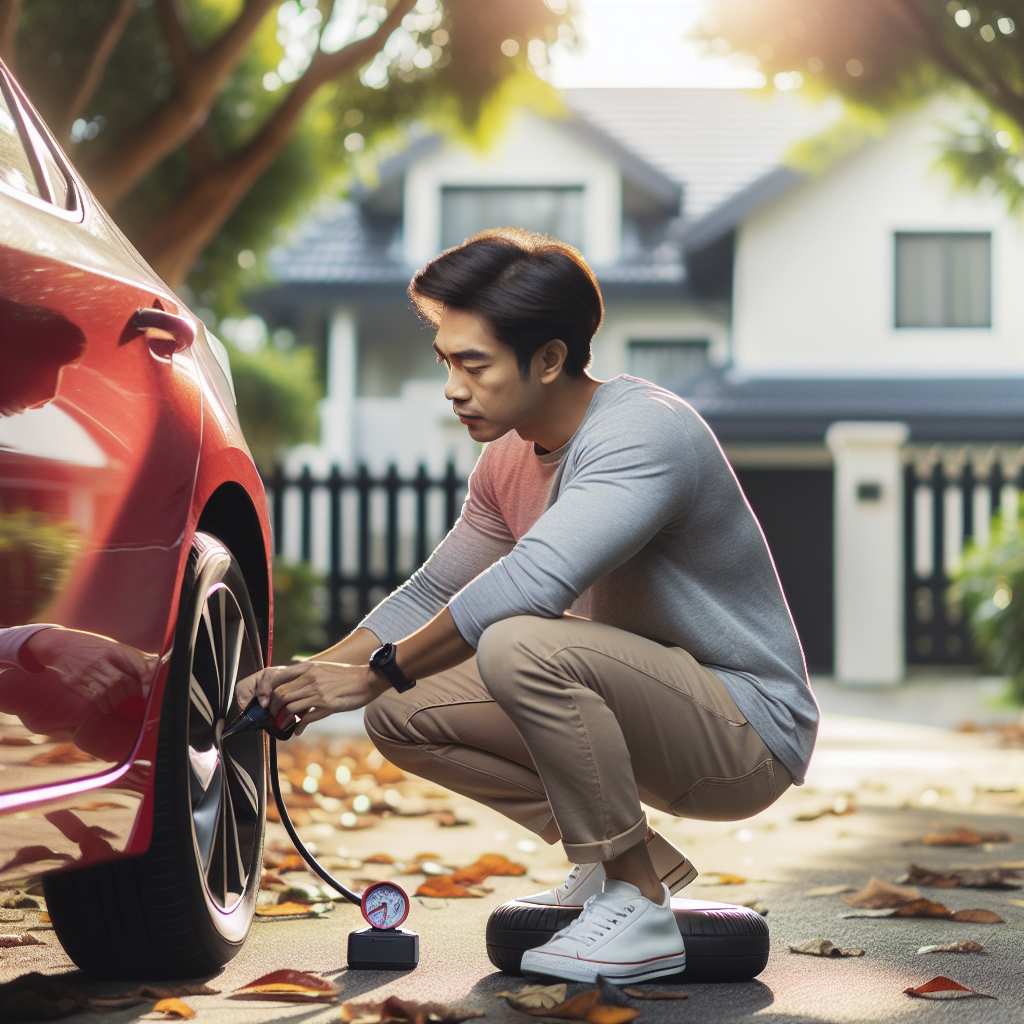Translate
The Importance of Regular Tire Maintenance
Tire maintenance is a crucial aspect of vehicle care. Yet, it's often overlooked by many vehicle owners.
Understanding tire wear patterns can help you identify potential issues early. It can also extend the lifespan of your tires, improving your vehicle's performance and safety.
Whether you're a car enthusiast or a regular vehicle owner, this guide will equip you with the knowledge to keep your tires in top shape.
Understanding Tire Wear and Its Implications
Tire wear is a natural part of driving. It's the gradual loss of tread on your tires due to friction with the road surface.
Different factors can influence how quickly your tires wear. These include your driving habits, tire pressure, wheel alignment, and the type of tires you use.
Recognizing the signs of tire wear can help you address potential issues early. It can also prevent costly repairs and ensure your vehicle's safety on the road.
Understanding the implications of tire wear is crucial. It not only affects your vehicle's performance but also its fuel efficiency and handling.
Recognizing Common Tire Wear Patterns
Tire wear patterns can tell you a lot about your vehicle's condition. For instance, uneven wear on one side of the tire could indicate an alignment issue.
Center wear, on the other hand, often suggests over-inflation. While wear on both edges of the tire could mean the tire is under-inflated.
By recognizing these patterns, you can take corrective action and prevent further damage to your tires.
The Consequences of Ignoring Tire Wear
Ignoring tire wear can lead to serious consequences. It can reduce your vehicle's handling and braking efficiency, increasing the risk of accidents.
Worn tires also have less grip on the road. This can be particularly dangerous in wet or icy conditions, where traction is crucial.
Moreover, ignoring tire wear can lead to premature tire failure, resulting in unexpected and potentially costly replacements.
The Role of Tire Pressure and Wheel Alignment
Tire pressure and wheel alignment play a significant role in tire wear. Maintaining the correct tire pressure is crucial for even tire wear and optimal vehicle performance.
Under-inflated tires can cause excessive wear on the tire's edges. Over-inflated tires, on the other hand, can lead to rapid center wear.
Wheel alignment, too, is critical. Misaligned wheels can cause uneven tire wear, reducing the lifespan of your tires.
How Improper Alignment Affects Tires
Improper wheel alignment can lead to several tire wear issues. One common problem is 'feathering', where the tire tread is smooth on one side and sharp on the other.
Another issue is 'camber wear', characterized by wear on the inner or outer edge of the tire. This usually indicates a problem with the wheel's camber angle.
Ignoring these signs of improper alignment can lead to premature tire wear and potential vehicle handling issues.
Toe In Tire Wear and Steering Issues
Toe in tire wear is a common issue caused by improper wheel alignment. It's characterized by excessive wear on the outer edge of the tires.
This type of wear can affect your vehicle's steering and handling. It can also lead to decreased fuel efficiency and increased tire replacement costs.
By regularly checking your wheel alignment and correcting any issues, you can prevent toe in tire wear and maintain your vehicle's performance.
Tire Maintenance: Rotation, Balancing, and Replacement
Regular tire maintenance is key to extending the life of your tires. This includes tire rotation, balancing, and timely replacement.
Tire rotation helps ensure even tire wear, enhancing your vehicle's performance and safety. Balancing your tires, on the other hand, can prevent vibrations and irregular wear.
When and How to Rotate Your Tires
Tire rotation should be done every 5,000 to 8,000 miles. This can vary depending on your vehicle type and driving habits.
The rotation pattern also depends on the type of tires you have. For instance, directional tires should be swapped front to back on the same side of the vehicle.
Regular tire rotation can help you identify any alignment or balance issues early on, preventing excessive tire wear.
The Importance of Tire Balancing
Tire balancing is crucial for a smooth ride. Unbalanced tires can cause vibrations, leading to uneven tire wear and strain on your vehicle's suspension.
Regular tire balancing checks can help maintain your vehicle's performance and extend the life of your tires.
Knowing When to Replace Your Tires
Knowing when to replace your tires is crucial for your safety. Look for signs of excessive wear, such as worn tread or visible tire wear indicators.
If your tires are more than 10 years old, consider replacing them, even if they appear to be in good condition. Age can affect a tire's structural integrity.
DIY Tire Maintenance and Professional Services
While professional services are essential for certain aspects of tire maintenance, there are several checks you can perform at home. These can help you spot potential issues early and maintain your tires effectively.
However, it's important to know when to seek professional help. Some tire issues require expert attention to ensure your vehicle's safety and performance.
Simple Tire Checks You Can Do at Home
Regularly inspect your tires for any visible damage, such as cuts, punctures, or bulges. Also, check the tread depth to ensure it's within the legal limit.
You can also monitor your tire pressure at home. Use a tire pressure gauge and ensure it's within the recommended range for your vehicle.
When to Seek Professional Tire Services
If you notice any unusual tire wear patterns, it's best to seek professional help. This could indicate alignment or balance issues that need expert attention.
Also, if your tires are damaged or excessively worn, it's time to consult a professional. They can advise on whether a repair or replacement is necessary.
Conclusion: The Benefits of Regular Tire Care
Regular tire maintenance is crucial for your vehicle's safety, performance, and longevity. It helps you spot issues early, prevent unnecessary wear, and extend the life of your tires.
In the end, a little effort in tire care can save you from costly repairs and potential road hazards.
You may like these posts
🔓 Get Full Access : marketing2advertising.com
Answer a few quick questions to unlock articles and free courses.
✅ Thank you! Access unlocked.
.gif)





0 Comments
for business Email us: marketing2advertising.com@gmail.com
#youtube #Amazon #Facebook #Google #Wordle #Weathe #News #marketing2advertising #X